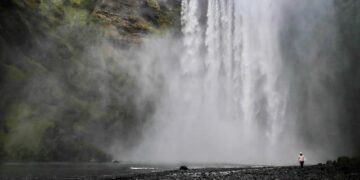The Tale of the World’s Largest Chocolate Bar and Its Untimely Burial
Introduction: A Sweet Odyssey Turned Sour
In a remarkable intersection of candy creation and environmental decision-making, an enormous chocolate bar, once heralded as the largest in the world, has been consigned to obscurity beneath the Mount Rumpke landfill. This intriguing story not only highlights the bar’s impressive size but also raises questions about sustainability practices in food production.
A Sweet Creation: The Making of a Giant Chocolate Bar
Initially unveiled with immense fanfare, this chocolate marvel weighed an astonishing 12,000 pounds and was crafted by a team dedicated to breaking records. Crafted primarily from premium cocoa beans sourced responsibly from sustainable farms, its creation was aimed at drawing attention to chocolate’s origins while also pushing culinary boundaries.
Reasons Behind Its Unfortunate Fate
However, despite its grand debut at a 2022 event meant to promote local businesses and artisans in Cincinnati, this gigantic confection faced unexpected challenges. As it became clear that maintaining such a colossal edible treat posed significant public health risks due to issues like spoilage and contamination potential—combined with considerable logistical nightmares—it was ultimately deemed safer for disposal rather than display.
According to recent studies published by food safety experts, large amounts of food left unchecked can become breeding grounds for harmful bacteria within just hours under certain environmental conditions.
Lessons Learned: Sustainability in Action
This perplexing circumstance offers valuable takeaways regarding sustainability in our consumer-driven society. As we continue celebrating unique products designed for marketing purposes—the trend towards larger-than-life creations needs rectifying with comprehensive waste management strategies upfront.
Food waste statistics reflect this need; globally approximately one-third of all food produced is wasted each year—amounting to around 1.3 billion tons worth about $1 trillion (FAO). It’s crucial for manufacturers and events alike to explore innovative ways that align product promotion without contributing negatively toward Earth’s ecosystems.
Conclusion: A Bitter End With Lessons Ahead
Though it is disheartening that such an extraordinary edible feat met its demise amidst landfill debris rather than delighting crowds across America—this peculiar chapter provides critical insights on responsibility standards required both from producers and consumers alike when navigating massive culinary experiments.
Final Thoughts
The giant chocolate bar buried beneath Mount Rumpke serves as both an example of human creativity gone awry as well as prompting important discussions about how we handle large-scale productions while ensuring minimal adverse impacts on our environment moving forward.































